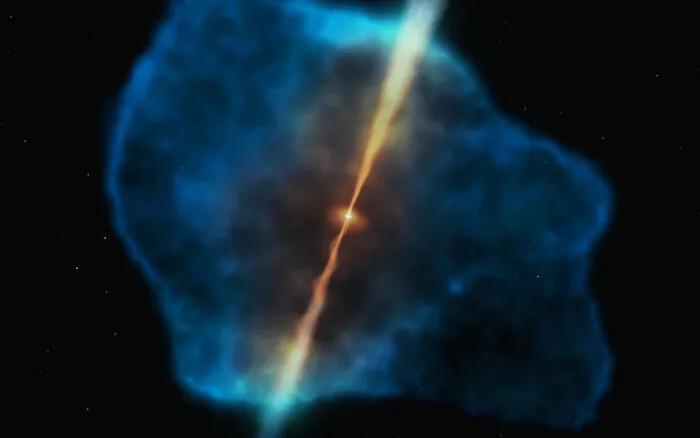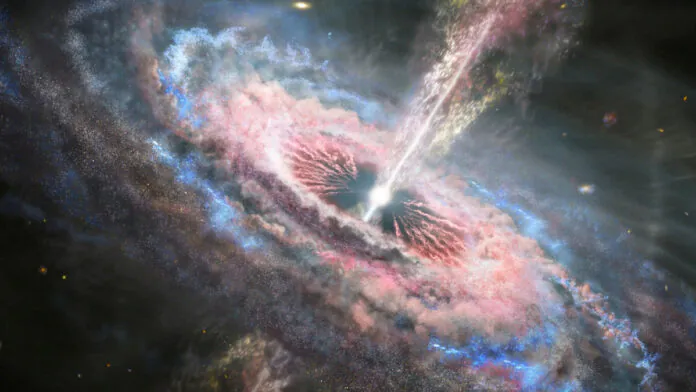© ROOT-NATION.com - Use of content is permitted with a backlink.
The mystery of the formation of the first quasars in the universe, which has puzzled scientists for almost 20 years, has now been solved by a group of astrophysicists, whose findings are published in the journal Nature. The existence of more than 200 quasars driven by supermassive black holes less than a billion years after the Big Bang has remained one of the biggest unsolved problems in astrophysics, as it is not clear how they formed so early.

A team of experts led by Dr. Daniel Whalen of the University of Portsmouth found that the first quasars formed naturally in the violent turbulent conditions of rare reservoirs of gas in the early universe. Dr Whalen said: “This discovery is particularly exciting because it has overturned 20 years of thought on the origin of the first supermassive black holes in the universe.”
Scientists used computer simulations to recreate the processes of the early universe. They found that cold, dense streams of gas could have formed supermassive stars in the galactic halo in just a few hundred million years, which collapsed into the first black holes. The existence of more than 200 quasars, which formed a billion years after the Big Bang, puzzled astrophysicists for several decades. The formation of such supermassive objects required stars 100,000 times the mass of the Sun.
Astrophysicists have long assumed that 10,000 to 100,000 solar-mass stars formed in the early universe. But it was believed that the rapid formation of more massive objects is possible only in extreme conditions. For example, it could be a strong ultraviolet background or supersonic flows between gas and dark matter.

In a paper published in Nature, scientists have shown that supermassive stars could have formed under “normal” conditions in the early universe. The collision of cold streams of gas caused turbulence in the galactic cloud, which prevented star formation. As a result, instead of solar-sized objects, a massive cloud was formed. Under the influence of gravity, it compressed into giant primary stars with a mass of several tens of thousands of Suns.

The researchers note that the new model explains not only the nature of the first quasars, but also their small number. “The first supermassive black holes were simply a natural consequence of structure formation in cold dark matter cosmologies—children of the cosmic web.” – Dr. Whalen noted.
You can also help Ukraine fight with Russian occupants via Savelife or via an official page of the National Bank of Ukraine.
Subscribe to our pages in Twitter and Facebook.
Read also:
- New EEG earphones will provide ISS astronauts with sleep tracking
- NASA has lost radio contact with the CAPSTONE lunar probe


